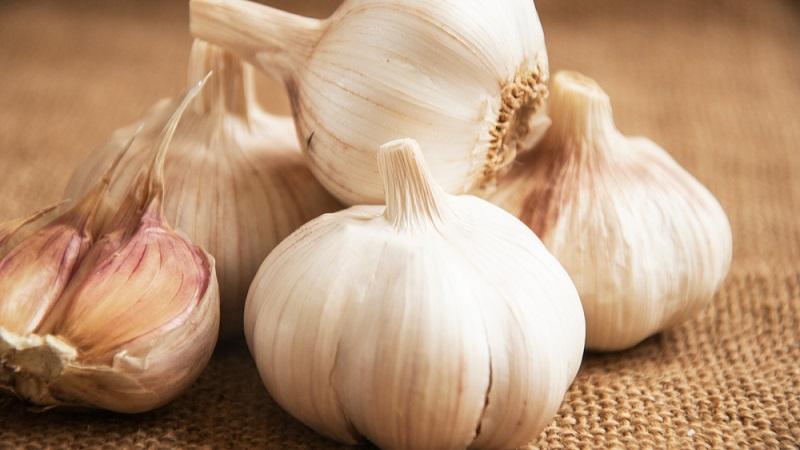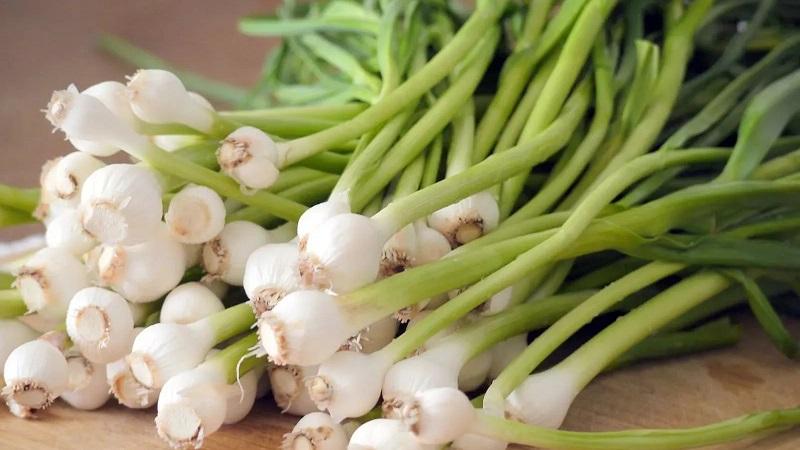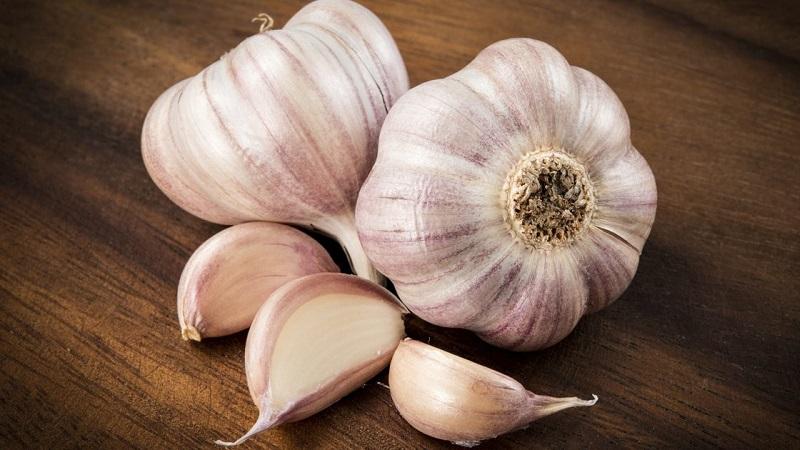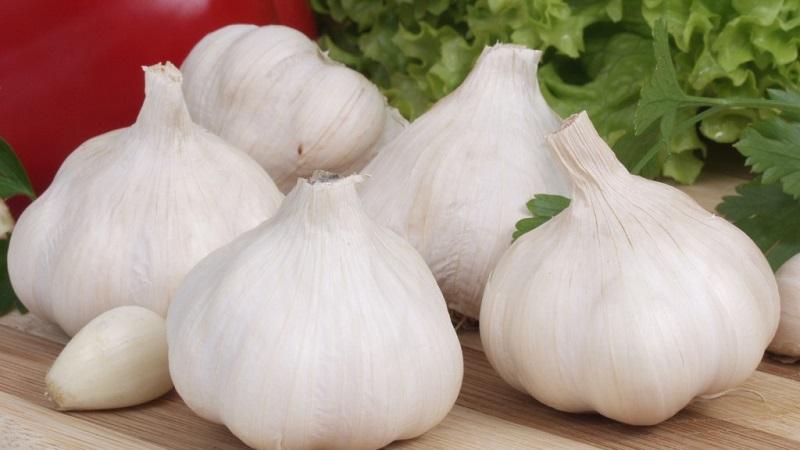Let's figure it out together in a common question: "Is garlic a vegetable or not?"
We have known garlic since childhood. We ate it reluctantly to beat the common cold. Parents put jars of peeled garlic around the house and said, "It kills bacteria." It is difficult to underestimate the health benefits of garlic. Its taste is no less remarkable - it is an irreplaceable ingredient in thousands of dishes.
Have you ever wondered what this product is? Is garlic a vegetable or not? How does science classify it? From the article you will get an answer to this question and find out what useful properties garlic has.
The content of the article
What is Garlic? Vegetable or not?
To answer these questions, let's look far into the past and find out where this unusual product came from.

Origin
Asia is considered to be the homeland of garlic. More precisely, the regions of Afghanistan and India. It was from the territories of these countries that the culture spread all over the world - Egypt, Great Britain, China. People were primarily attracted by the bright smell and rich taste. In addition, our ancestors immediately realized that the plant has a lot of useful properties.
With the development of civilization, garlic became more and more popular.... In the Middle Ages, people ate garlic, as it provided a huge amount of vitamins to the body. And as you know, food products at that time did not differ in variety. In addition, magical properties were attributed to garlic. However, for the Middle Ages it was in the order of things.
Chemical composition
Garlic contains a huge amount of beneficial elements... The chemical composition of the product is carbohydrates, proteins, fiber, nitrogenous substances, vitamins, sodium, potassium and calcium. And this is not the whole list of chemical particles. In total, the product contains about 50 useful elements, many of them are valuable antioxidants.
The most valuable are B vitamins and ascorbic acid... Plus, garlic is characterized by the presence of essential oils, which are also used in medicine and cosmetology. It should be noted that selenium is a powerful antioxidant. It helps our body get rid of parasites and microbes.
Important. Garlic - what is it? From a scientific point of view, garlic is a real vegetable. It belongs to the family of perennial herbaceous plants.
The nutritional value
100 g of product contains 149 kcal. This represents 10.46% of the daily intake for the average healthy person. The amount of protein is 6.5 g, carbohydrates - 29.9. Garlic has a low fat content - only 0.5 g per 100 g. The plant also contains dietary fiber - 1.5 g.
The healing properties of garlic
The plant strengthens the immune system and has bactericidal properties... It also relieves fungal infections and removes intestinal infections from the body. In addition, the product is able to thin the blood, lower cholesterol levels, stimulate digestion, and prevent the development of malignant tumors. Regular consumption reduces the level of mucus in the body.
Plus to everything the product lowers blood pressure, prevents clogging of arteries, has a diuretic effect... Helps wounds heal faster. In other words, the medicinal properties of the product can really be called magical.
It will be interesting:

Types of garlic
Consider what varieties exist and how they differ from each other.
- Spring. It is planted mainly in the spring. The culture tolerates spring frosts well. One head can have up to 30 lobules. It is stored much longer than other varieties, while it does not lose its useful properties. Spring garlic loves moisture, so water it abundantly. The crop should be harvested until mid-September.
- Winter. Unlike the spring one, the crop is planted in the fall. The head contains only about 10 large lobules. The harvest of winter garlic is one of the highest, but it does not last long. Loves fertile soil. It is better to choose a dry and elevated place for landing. The largest heads are chosen for planting. It is winter garlic that is most often used in restaurants, catering places, shops.
- One-tooth. In fact, this is planting material. Outwardly, it has a rounded shape, the name speaks for itself - it consists of only one tooth. The one-tooth is used for propagation of other, more valuable varieties. The advantage of one-toothed teeth is that they can be stored for about three years, without losing their valuable qualities. Compared to other materials, a one-tooth is more expensive.
- Kustovoy. It is usually planted to produce greens. The plant is planted 10-15 days before the onset of the first frost - he is not afraid of cold weather. It is not whimsical to care for, however, like any other plant, it requires timely watering.
What is elephant garlic
The plant was nicknamed so for its large size... The vegetable loves light and large open areas. In no case should you plant it in the shade. It is best to plant in winter or spring, while pre-preparing the soil. Garlic loves moisture and nitrogen.
In order for the harvest to be rich, you need to follow a number of rules.... For example, keep the soil loose, remove grass weeds, and water abundantly. It should also be remembered that elephant garlic loves compost and various fertilizers.
Important! The taste of elephant garlic is spicy, while it has a piquancy. Culinary experts love to add it to haute cuisine. At the same time, the culture is perfectly stored at room temperature if it is dried and ventilated on time.
How to choose and store correctly
Unfortunately, 80% of the garlic in our stores and markets is imported.... They bring him mainly from China. A foreign product often contains harmful impurities that are used to make garlic grow faster and keep it longer. Plus, the plant is soaked in chlorine - this procedure gives it an attractive appearance.
To choose a really healthy and tasty vegetable, use these expert tips:
- A good product will be firm and not dry. Therefore, if you took a head of garlic in your hand, which literally crumbles in your palm, this is a low-quality vegetable.
- Don't believe in perfect looks. This is often done with harmful chemicals.
- Good garlic should have a bright flavor and juiciness. If you buy a product on the market, try biting off one clove. Be sure to use chewing gum afterwards, of course.
- Better to buy a plant with stem and root.
Application in traditional medicine and cooking
Preparations from this plant are often used to treat diseases. Garlic is known for has an antibacterial effect and kills pathogenic fungal microorganisms... In addition, the product stimulates appetite and reduces high blood pressure. It is possible to list the wonderful properties of this product for a very long time.

Read also:
Since the product contains essential oils, it used for the prevention and treatment of bronchial asthma... Garlic oil or garlic tincture will have a good healing effect.Garlic gruel can be spread on bread, or simply eaten at lunch. It is also helpful to make compresses based on garlic oil.
Besides, traditional medicine recipes advise using garlic to prevent cancer... Depending on the form of the disease, healers are advised to consume the product on an empty stomach, or to make squeezes of juice and add it to water.
Important! At the start of treatment, it is difficult to immediately swallow garlic or garlic oil - a taste of bitterness and a strong burning sensation appears in the mouth. Experts advise to gradually increase the dose, rather than swallow 2-3 cloves at once. Soon you will feel that your body does not resist, but on the contrary - it feels much better.
Keep in mind that not everyone is shown to use garlic for medicinal purposes.... Before using folk recipes, consult your doctor for any contraindications.
In cooking
National cuisines around the world love garlic. They use everything - the roots, the leaves, and the heads themselves... Typically, the plant is used as a savory addition to main dishes. The product is in perfect harmony with meat and fish, vegetables and other herbs. Dried garlic or garlic salt is often added to food. You can make it yourself or buy it in a store.
From product make spices, oils, salad dressings... Garlic is especially loved in Asia - in those countries where they traditionally prefer spicy and pungent food. To preserve its useful qualities, it is necessary to subject it to less thermal processing.
Garlic doesn't like to be boiled or fried for a long time... It is best to put a whole head in the finished dish - then its aroma will give the food a unique taste.
Plus to everything the product is used as a preservative... When preparing pickled tomatoes or cucumbers, it is almost impossible to imagine that the hostess would not add a couple of garlic cloves to them.
Application in medicine
Many herbal remedies are made based on garlic... The essential oil is added to ointments to help treat insect bites and calluses. Also, cough and bronchitis medicines are made on the basis of garlic oil.

In cosmetology
For beauty, garlic is useful if:
- Make garlic hair maxi... They strengthen the skin of the hair follicles, due to which the hair falls out less and becomes stronger.
- Use against acne and acne... Since the plant has a high antibacterial effect, it copes well with skin inflammation.
- Make hand baths... They will leave your skin soft and hydrated.
Important! Be careful, garlic can be very irritating. Check the skin's reaction to the product before use. If you feel a burning sensation and redness, then rinse the burned area with copious amounts of water.
Contraindications
You garlic should not be consumed if:
- you have a stomach ulcer;
- chronic gastritis;
- liver and kidney disease;
- hemorrhoids;
- epilepsy;
- allergy to substances contained in the plant;
- also the product is contraindicated during pregnancy and lactation.
This is not a complete list of contraindications.... A person may have an individual intolerance to the product.
Conclusion
Garlic is a storehouse of beneficial properties. It is used in medicine, cooking and cosmetology. If you grow your own crop, do so in accordance with all planting and harvesting rules. Remember that the vegetable loves moisture and large light spaces. Under favorable conditions, garlic can be stored for up to 3 years without losing its beneficial properties.
However, be careful - the product has many contraindications. Garlic should not be consumed by people with stomach diseases, as well as those who are hypersensitive to plant components. Remember - everything is good in moderation. In no case do not abuse this useful, but at the same time dangerous product.
I eat garlic all the time, helps against vampires